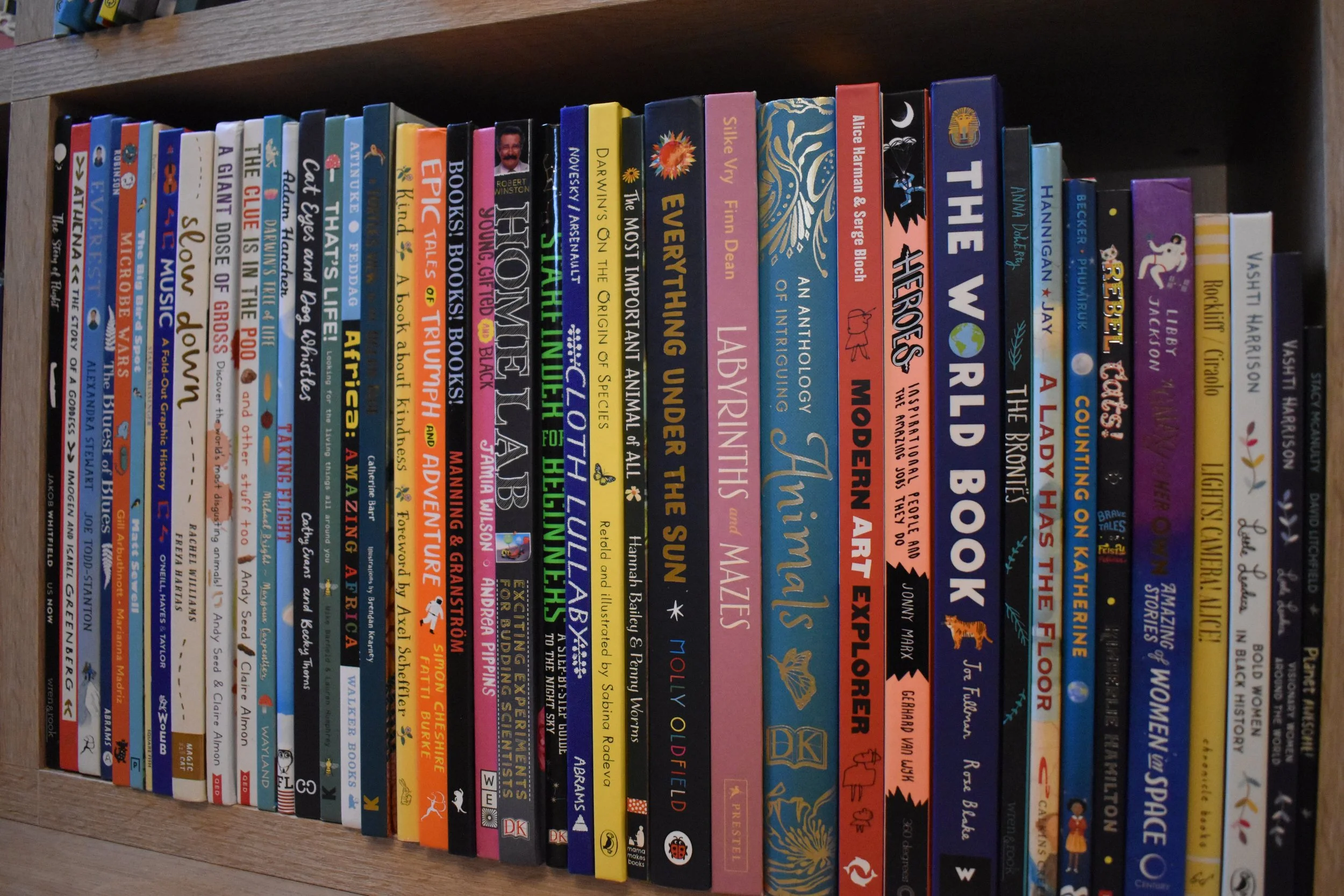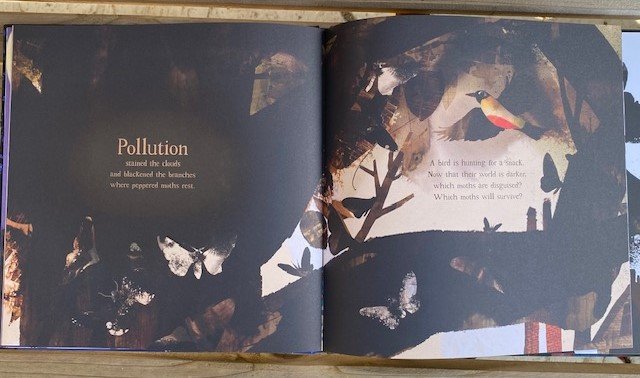
Reviews from Another Life
I have been reviewing books for many years. Here you can search for reviews of other titles by the authors, illustrators, poets and publishers featured on my ‘Reviews’ blog.
Professor Astro-Cat’s Deep-Sea Voyage
Professor Astro-Cat and his team are off on another adventure. Having arrived at the beach to enjoy some fun, they take a closer look at the seashore with its tide pools, sand and waves. Each element is clearly explained, with emboldened words appearing in a glossary at the end of the book. After discovering how oceans are formed, the gang climb aboard a ship and proceed to explore the oceans and their features, the water cycle and the diverse habitats and life forms that populate the deep.
This fascinating read is packed full of facts, peppered with the humorous antics of the crew. Along with the food web, water cycle and sea creatures, many of the places they visit- the Galapagos Islands, the Antarctic, underwater mountains, tectonic plates- feature in the KS2 curriculum, making this as useful as it is attractive.
The book also looks at the threats that are facing the oceans from overfishing to plastic pollution before explaining what is being done to reverse this and things that can be done to help. There is a Factoids section at the end which contains some amazing snippets of information to get young scientists investigating!
As with all these books, the illustrations are brilliant. Bright colours and bold blocks add to the appeal. Contents and index pages help readers to quickly navigate the text, making this excellent for dipping in and out of, locating information or reading from cover to cover.
Professor Astro Cat’s latest trip is every bit as enjoyable and informative as his previous expeditions. Join him on his deep sea voyage soon!
Professor Astro Cat’s Deep-Sea Voyage
Dr Dominic Walliman, illustrated by Ben Newman
Flying Eye Books ISBN: 978-1912497126
Professor Astro Cat's Human Body Odyssey
Professor Astro Cat is off on another amazing journey- this time to explore the wonders of the human body. The book starts by explaining what biology is and identifying the seven characteristics of living things.
Professor Astro Cat and his team then seek to answer all manner of questions about the human body and how it works from your cells to your ears to your heart to genetics. The book also looks at some quite complex bodily functions- the lymphatic system, the endocrine system, the immune system and genetics. Each area is carefully explained with clear illustrations to support the text. The book also looks at reproduction and keeping healthy before finishing with impairments and future science. From start to finish, it's a fascinating read with fabulous illustrations.
Covering many of the areas of study for KS2 science, 'Professor Astro Cat's Human Body Odyssey' would be a welcome addition to any classroom as a reference tool and for examples of explanation writing.
A 'factoroids' section offers some gems and a glossary/ index clearly explains terms used throughout the book. Excellent stuff!
Professor Astro Cat's Human Body Odyssey
Dr Dominic Walliman, illustrated by Ben Newman
Flying Eye Books ISBN:978-1911171140
Moth: An Evolution Story
The peppered moth story is a famous example of natural selection and this beautiful book vividly brings it to life. Until the early 1800s, most of these moths were light with peppered wings, with a very rare dark variety. The moths’ wings help them to lie camouflaged on lichen-covered branches; however, with the advent of the Industrial Revolution and its pollution, the reverse became true. The darker variety became dominant as through natural selection, the darker moths were better adapted to their environment. As laws to reduce air pollution have been passed, the lichens have grown back and the light moths have returned and now both varieties can be seen.
This book is a real gift to the Y6 teacher when teaching the Science P of S strand : to identify how animals and plants are adapted to suit their environment in different ways and that adaptation may lead to evolution. The story of the moth is told clearly, effortlessly explaining the ‘science bit’ and encouraging the reader to go and look for these wonderful creatures. A message of hope - hope for survival, hope for adaptation and hope for change. More detailed notes are included at the end, including the Latin name (Linnaeus’s binomial system!).
In addition to the fascinating text the book is lavishly illustrated with stunning illustrations. From the stunning moth emerging from its cocoon to the dangers of predators to the menacing pollution to the cleaner skies, each spread is just gorgeous.
‘Moth’ is both fascinating and beautiful- and an excellent resource for school! The perfect mix of art and science, it’s a real must have!
Moth: An Evolution Story Isabel Thomas, illustrated by Daniel Egneus
Bloomsbury ISBN: 978-1408889756
Darwin’s Dragons
Syms Covington was taken on to the Beagle as cabin boy and fiddler, but has spent the past two years acting as assistant to Mr Darwin, a young scientist, as he explores the Galapagos Islands. However, an accident during a storm leaves him shipwrecked and alone in an inhospitable place, struggling to survive. Here, he makes an incredible discovery which will change his life forever.
‘Darwin’s Dragons’ mingles truth and imagination to create a fabulous story. To create her Syms, Lindsay Galvin has used a real cabin boy and fiddler of that name on board the Beagle who was promoted to Darwin’s assistant, instantly showing children what a little research and a lot of creativity can do. The novel is perfect for any class looking at the Year 6 science ‘Evolution and Inheritance’ and ‘working scientifically’ objectives, but offers so much more than this.
When shipwrecked on Narborough Island, Syms is helped by a lizard which he calls Farthing. The relationship developed between these two is developed beautifully, amid stunning descriptions of the island and its flora and fauna. Syms’ time on the island is full of fear and tension as he faces danger from volcanic activity- and a dragon which lives there. With Farthing’s help, Syms rescues the dragon’s eggs, and escapes to sea where, miraculously, he is rescued by the Beagle.
Once back in London, when the eggs hatch, they are considered to be an exotic lizards with Syms alone recognising the truth. When his beloved dragons are rehomed at the London Zoological Society, Syms struggle to accept the attitude many, including Mr Darwin, have to the fate and well being of the creatures there. This offers many excellent opportunities for discussions about historical attitudes to ‘specimens’ as well as current ones, the need for conservation, the role of zoos, etc.
The attention to detail throughout the story is wonderful, creating a book rich in historical detail as well as exciting adventure. There is a map showing the Beagle’s voyage at the beginning of the story and notes at the end offering further information and a timeline of Darwin’s life. The covers fold out to show maps, sketches, notes and pictures, perfect for inspiring further investigation and discovery.
The perfect blend of fact and fantasy, ‘Darwin’s Dragons’ offer much to discuss, but more to enjoy.
Darwin’s Dragons Lindsay Galvin
Chicken House ISBN: 978-1912626465





